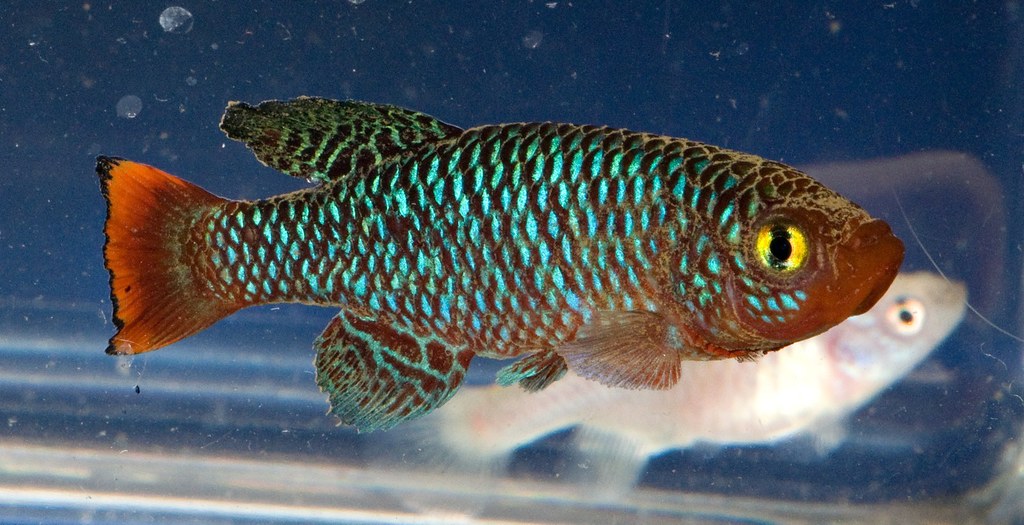Velvet is a generally not a common disease but it shows up in some types of fish more than others, for example the Killifish in the genus Nothobranchius is notoriously susceptible as are Bettas and other members of the Gourami family.
Velvet can be difficult to cure as it can be hard to detect and often the first sign the disease if often a terminal stage and mere hours before death. Little can be done at that point. It is not possible;e to plainly see the infection on the fish and it's only visible when the fish has direct lighting shining on it/ Killi folks use flashlights and Velvet is unmistakable to see then. It looks like the fish had a very very fine sand sprinkled on it. That's Velvet, no other disease looks like this - like a very fine sand was sprinkled on head of the fish.
The disease is cased by a parasitic Dinoflagelate in the genus Oodinium and both fresh water and salt water species exist. It attacks the gills first, and then moves to the body but by this time the gills are so damaged the first symptom noticed is often gasping at the surface dying. The fish will have been acting erratically before that, scraping against rocks,trying to scratch an itch that it can not and their fins will be clamped. This should serve as a warning to get the flashlight out and check for Velvet.
The usual treatment is copper, which is not without it's problems. Nothobranchius keepers routinely use salt in their Notho tanks (1 Tablespoon per gallon/ 4 Liters) to prevent this often fatal disease.

Nothobranchius without Velvet.

Nothobranchius with Velvet.